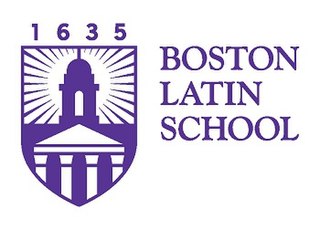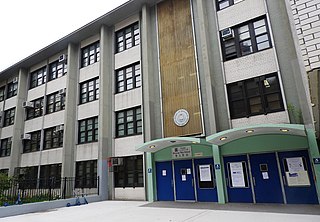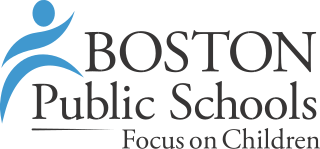
Everett is a city in Middlesex County, Massachusetts, United States, directly north of Boston, bordering the neighborhood of Charlestown. The population was 49,075 at the time of the 2020 United States Census.

Malden is a city in Middlesex County, Massachusetts, United States. At the time of the 2020 U.S. Census, the population was 66,263 people.

Anna Louise Day Hicks was an American politician and lawyer from Boston, Massachusetts, best known for her staunch opposition to desegregation in Boston public schools, and especially to court-ordered busing, in the 1960s and 1970s. A longtime member of Boston's school board and city council, she served one term in the United States House of Representatives, succeeding Speaker of the House John W. McCormack.

Race-integration busing in the United States was the practice of assigning and transporting students to schools within or outside their local school districts in an effort to diversify the racial make-up of schools. While the 1954 U.S. Supreme Court landmark decision in Brown v. Board of Education declared racial segregation in public schools unconstitutional, many American schools continued to remain largely uni-racial due to housing inequality. In an effort to address the ongoing de facto segregation in schools, the 1971 Supreme Court decision, Swann v. Charlotte-Mecklenburg Board of Education, ruled that the federal courts could use busing as a further integration tool to achieve racial balance.

White flight or white exodus is the sudden or gradual large-scale migration of white people from areas becoming more racially or ethnoculturally diverse. Starting in the 1950s and 1960s, the terms became popular in the United States. They referred to the large-scale migration of people of various European ancestries from racially mixed urban regions to more racially homogeneous suburban or exurban regions. The term has more recently been applied to other migrations by whites, from older, inner suburbs to rural areas, as well as from the U.S. Northeast and Midwest to the milder climate in the Southeast and Southwest. The term 'white flight' has also been used for large-scale post-colonial emigration of whites from Africa, or parts of that continent, driven by levels of violent crime and anti-colonial or anti-white state policies.
In the U.S. education system, magnet schools are public schools with specialized courses or curricula. Normally, a student will attend an elementary school, and this also determines the middle school and high school they attend unless they move. "Magnet" refers to how magnet schools accept students from different areas, pulling students out of the normal progression of schools. Attending them is voluntary.

The Boston Latin School is a selective public exam school in Boston, Massachusetts. It was established on April 23, 1635, making it both the oldest public school in British America and the oldest existing school in the United States. The school's admission policies and demographics have been controversial.

PS 184M Shuang Wen School, a public school in New York City also known as PS 184, is a Dual Language elementary and middle school located in Lower Manhattan. The school teaches students from Pre-Kindergarten to 8th grade. It is a part of the New York City Department of Education and located in Manhattan District 1 which includes the Lower East Side and East Village. A major $1.7 million renovation of the school playground and soccer field was completed in 2019 by the Trust for Public Land and DEP. In the elementary school, the school teaches in Traditional Chinese and utilizes the zhuyin phonetic system popular in Taiwan. During the typical school day, one day is taught in English and other day is in Mandarin. As a Dual Language school, classes in both languages are a mandatory part of the curriculum.
The term model minority refers to a minority group, defined by factors such as ethnicity, race, or religion, whose members are perceived to be achieving a higher socioeconomic status in comparison to the overall population average. Consequently, these groups are often regarded as a role model or reference group for comparison to external groups (outgroups). This success is typically assessed through metrics including educational attainment, representation within managerial and professional occupations, household income, and various other socioeconomic indicators such as criminal activity and strong family and marital stability. The prominent association of the model minority concept is with Asian Americans within the United States. Additionally, analogous concepts of classism have been observed in numerous European countries, leading to the stereotyping of specific ethnic groups.

Galveston Independent School District is a school district headquartered in Galveston, Texas, United States.

Kevin Hagan White was an American politician best known for serving as the mayor of Boston for four terms from 1968 to 1984. He was first elected to the office at the age of 38. He presided as mayor during racially turbulent years in the late 1960s and 1970s, and the start of desegregation of schools via court-ordered busing of school children in Boston. White won the mayoral office in the 1967 general election in a hard-fought campaign opposing the anti-busing and anti-desegregation Boston School Committee member Louise Day Hicks. Earlier he had been elected Massachusetts Secretary of the Commonwealth in 1960 at the age of 31, and he resigned from that office after his election as Mayor.

Boston Public Schools (BPS) is a school district serving the city of Boston, Massachusetts, United States. It is the largest public school district in the state of Massachusetts.
Residential segregation is the physical separation of two or more groups into different neighborhoods—a form of segregation that "sorts population groups into various neighborhood contexts and shapes the living environment at the neighborhood level". While it has traditionally been associated with racial segregation, it generally refers to the separation of populations based on some criteria.
Racial diversity in United States schools is the representation of different racial or ethnic groups in American schools. The institutional practice of slavery, and later segregation, in the United States prevented certain racial groups from entering the school system until midway through the 20th century, when Brown v. Board of Education forbade racially segregated education. Globalization and migrations of peoples to the United States have increasingly led to a multicultural American population, which has in turn increased classroom diversity. Nevertheless, racial separation in schools still exists today, presenting challenges for racial diversification of public education in the United States.
The racial achievement gap in the United States refers to disparities in educational achievement between differing ethnic/racial groups. It manifests itself in a variety of ways: African-American and Hispanic students are more likely to receive lower grades, score lower on standardized tests, drop out of high school, and they are less likely to enter and complete college than whites, while whites score lower than Asian Americans.
The desegregation of Boston public schools (1974–1988) was a period in which the Boston Public Schools were under court control to desegregate through a system of busing students. The call for desegregation and the first years of its implementation led to a series of racial protests and riots that brought national attention, particularly from 1974 to 1976. In response to the Massachusetts legislature's enactment of the 1965 Racial Imbalance Act, which ordered the state's public schools to desegregate, W. Arthur Garrity Jr. of the United States District Court for the District of Massachusetts laid out a plan for compulsory busing of students between predominantly white and black areas of the city. The hard control of the desegregation plan lasted for over a decade. It influenced Boston politics and contributed to demographic shifts of Boston's school-age population, leading to a decline of public-school enrollment and white flight to the suburbs. Full control of the desegregation plan was transferred to the Boston School Committee in 1988; in 2013 the busing system was replaced by one with dramatically reduced busing.

School segregation in the United States was the segregation of students based on their ethnicity. Where they were not prohibited from schools and denied an education, various minorities were barred from schools for whites. The U.S. Supreme Court rules Blacks were not and could never be U.S. citizens and overturned the 1875 Civil Rights Act, passed by Republicans during the Reconstruction era, in 1883. Segregation laws were dismantled in the late 1960s by the U.S. Supreme Court. Segregation was practiced in the north and segregation continued longstanding exclusionary policies in much of the South after the Civil War. School integration in the United States took place at different times in different areas and often met resistance. Jim Crow laws codified segregation. These laws were influenced by the history of slavery and discrimination in the US. Secondary schools for African Americans in the South were called training schools instead of high schools in order to appease racist whites and focused on vocational education. After the ruling of Brown v. Board of Education, which banned segregated school laws, school segregation took de facto form. School segregation declined rapidly during the late 1960s and early 1970s as the government became strict on schools' plans to combat segregation more effectively as a result of Green v. County School Board of New Kent County. Voluntary segregation by income appears to have increased since 1990. Racial segregation has either increased or stayed constant since 1990, depending on which definition of segregation is used. In general, definitions based on the amount of interaction between black and white students show increased racial segregation, while definitions based on the proportion of black and white students in different schools show racial segregation remaining approximately constant.
South Boston High School was a public high school located in South Boston, Massachusetts, United States. It was part of Boston Public Schools. The school closed in 2003, and its former facility is currently occupied by Excel High School.

High school or senior high school is the education students receive in the final stage of secondary education in the United States. In the United States most high schoolers are ages 14-18 but some ages could be delayed due to birthdays. Most comparable to secondary schools, high schools generally deliver phase three of the ISCED model of education. High schools have subject-based classes. The name high school is applied in other countries, but no universal generalization can be made as to the age range, financial status, or ability level of the pupils accepted. In North America, most high schools include grades 9 through 12. Students attend them following graduation from middle school.

William Henry Ohrenberger was an American educator who served as superintendent of Boston Public Schools from 1963 to 1972.














